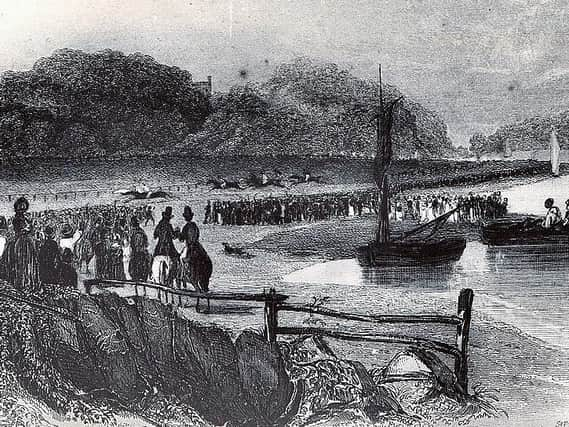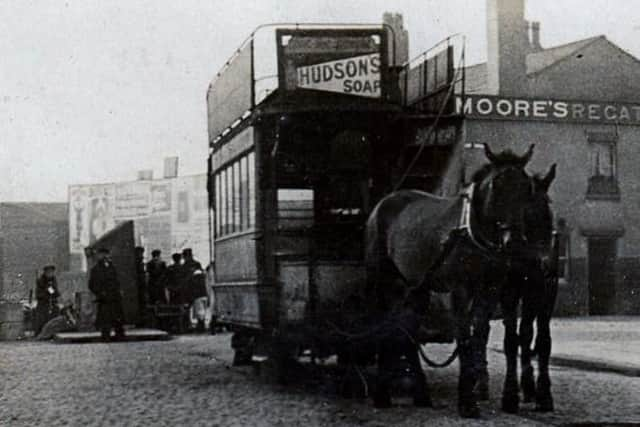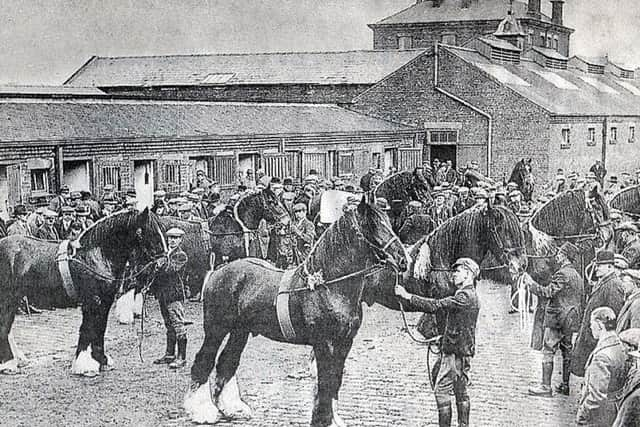Saddle up as the horse traders ride into town


Every January from the dawn of the 19th century until the mid 20th century Preston hosted the annual Preston Horse Fair, which attracted visitors from far and near.
Preston had developed an affinity with horses, having held races on the Preston Moor from 1726 until 1791, on Fulwood Moor until 1833 and on Penwortham Holme from 1842 until 1848.
Advertisement
Hide AdAdvertisement
Hide AdDuring the first half of the 19th Century the horse fair developed into a week-long event and was held mainly in Fishergate, Church Street and Lancaster Road. Only in January 1879, when it was reduced to a three-day event, did it


relocate to the newly-built covered market.
A report from one of the earliest of gatherings in 1809 tells us it was well attended and a great number of horses were on show. Horses for the Army being in great demand and sold at moderate prices.
Generally, as the years progressed, the Preston Horse Fair earned a reputation for supplying good horses, fit for saddle or harness, besides many good cart horses. Many never being brought up into the market stall, but bought up in the stable.
By 1829 a great number of highly respectable dealers were present, including an Irish dealer who sold all of his 10 horses at 70 guineas each.


Advertisement
Hide AdAdvertisement
Hide AdA Cumberland dealer sold the best of his hunters for 150 guineas.
The pick of the horses was one from Westmorland and it was bought by Samuel Horrocks Jr, of cotton trade fame, with the price undisclosed.
While the horse trading side of the event was carried out to the satisfaction of most, the week in January had, by 1855, begun to attract visitors to the town who could best be described as rogues,
vagabonds and light-fingered individuals.


The ale houses were doing a brisk trade and the local constabulary were on full alert. That year there was a great demand for cavalry horses and they were fetching upwards of £40, while heavy draught horses brought upwards of £60 – equivalent to £5,800 in today’s money. No wonder a dealer robbed of £50 down Surgeon’s Court had more than a sore head.
Certainly folk were
Advertisement
Hide AdAdvertisement
Hide Adoften careless with their cash, as highlighted in 1862 when there were a number of folk robbed of their money. A horse dealer from Yorkshire was duped out of £35 on Fishergate by two prostitutes; a smartly attired rogue helped himself to a purse containing £8 from the Bull Hotel and a man from Burnley was robbed of his portmanteau containing £5 while staying at the Shelley Arms.
Although there was still many an honest man in town, like Richard Parkinson, who found a bag containing £40 in Bank of England notes and handed it in at the police


station.
At the horse fair of 1874 there was a shocking incident on the Thursday afternoon. A horse was being ridden down a crowded Church Street, by William King, of Blackburn, when it suddenly shied, and lashed out with its hind legs, breaking the near foreleg of a mare, worth £40, the property of a man from Liverpool.
Inspector Carter, from the RSPCA, aided by local police, would not let the mare be removed, and insisted on it being slaughtered on the spot. It was sold at once to Joseph Slater, a horse slaughterer, from Blackburn, who procured a pole axe for the purpose of killing it. He struck the animal five times on the forehead, leaving it in agony, but still alive.
Advertisement
Hide AdAdvertisement
Hide AdA gentleman from the crowd then took the axe from him and despatched the animal at once.
Meanwhile, King’s horse had kicked out again further along the highway, and had struck and broken the leg of Thomas Whitlow, of Salford, who was riding past. Whitlow fainted and fell from his horse, and as he touched the ground King’s vicious brute kicked him on the chest. The unfortunate man being carried to the Cross Keys Inn to be treated.
By 1884 the fair had been reduced to a three-day event and was being held under the covered market canopy. It meant Fishergate and Church Street were relatively free of the mass of horses flying in all directions and causing great risk to pedestrians.
Nonetheless, with horses stabled at inns such as the Bull Hotel, Legs Of Man, Red Lion, Old Dog, New Cock Inn and Theatre Tavern, that Fishergate thoroughfare was still busy.
Advertisement
Hide AdAdvertisement
Hide AdAll the public houses had their hours extended until midnight for the duration of the fair and many horses changed hands at the stables before they got on the open market.
That year there were plenty of carriage horses, heavy horses of the Fylde were praiseworthy, tram car horses were in big demand at £50 and a circus pony called ‘Bertha’ fetched £160.
Of course there were a good percentage of horses which looked ready for the knackers yard and some riders were criticised for the way they rode about like savages, causing accidents and incidents.
The age of the motorised vehicles inevitably brought some decline in the demand for horses and it was reflected in the January 1906 fair, although there was still a good demand for the big, sound, weighty cart horses with lead-like hoof texture which generally fetched £60. While the traditional omnibus pulling horses were fetching up to £40.
Advertisement
Hide AdAdvertisement
Hide AdMoving on to 1921 there had been something of a shift in popularity of the Preston Horse Fair. It was held for one day only on the first Saturday of January. The steady introduction of Auction Marts had seen a gradual decline set in and on this occasion fewer than 50 animals were on
parade in the covered market, consisting of heavy and light horses and ponies. They were described as a very poor lot and trade was slack.
The tradition of the Preston Horse Fair did continue into the 1940s but by this time it was being held at the Preston Cattle Market.
Unfortunately, in 1945
owing to an outbreak of foot and mouth disease, it had to be held on the nearby Brook Street Recreation Ground. More than 200 horses were on display at this event and the top horse was reckoned to be a bay gelding owned by Mr Percival, of Warrington, which was valued at more than £150.
Like other events from Preston’s past it is now a distant memory, but in its hey day the Preston Horse Fair was an important event in the January calendar.